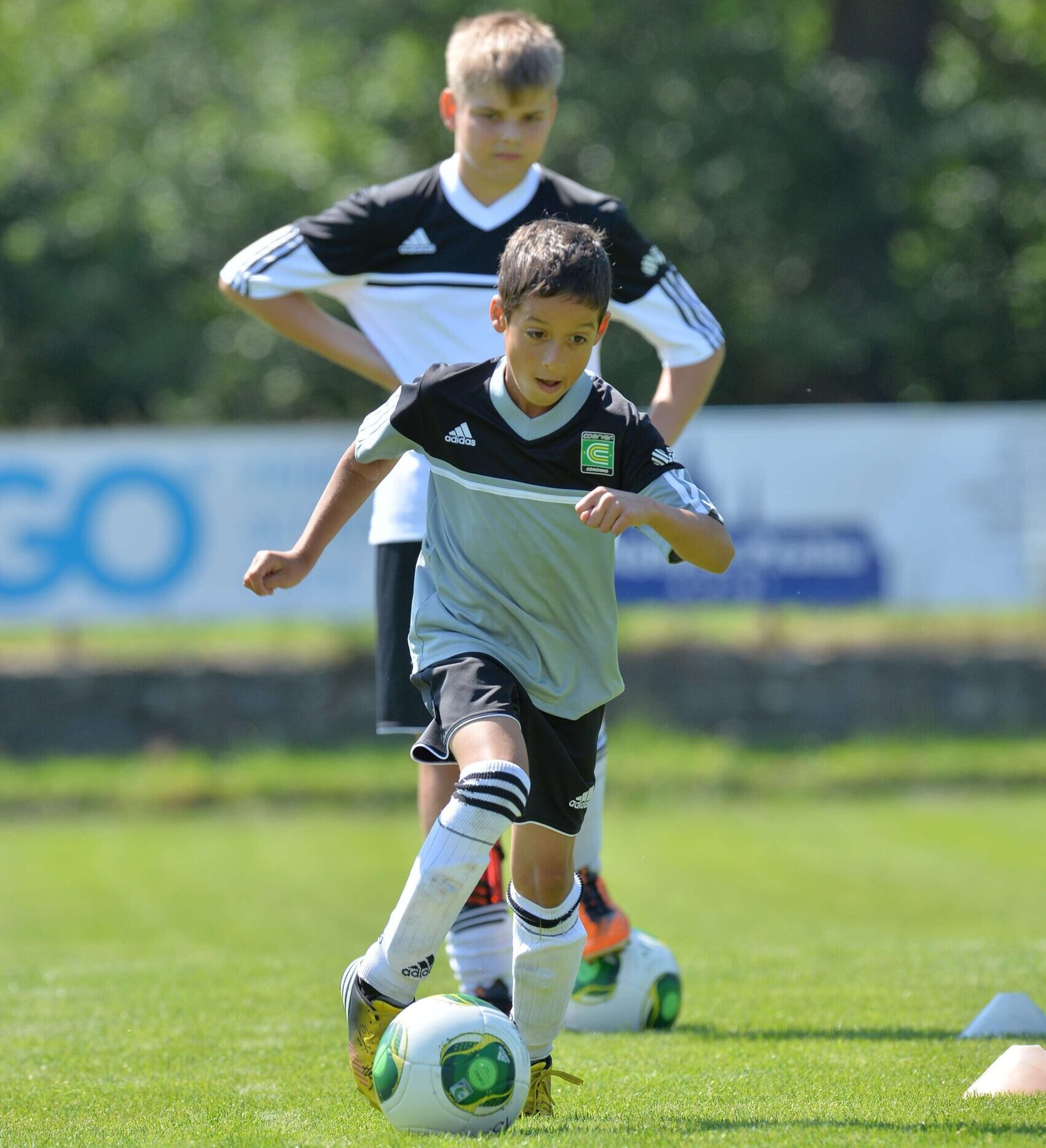Do you know that more than 200 million men and women share your passion for the ‘beautiful game’? Football (Soccer) is easily the world’s biggest sport, and no doubt will be even more popular when the Football World Cup kicks off in a few months’ time. Let’s learn how to raise your game.
But while modern marketing techniques boost football’s global popularity, out on the soccer pitch and in the locker room old-fashioned training and conditioning techniques often still apply. Many footballers – and their coaches – continue to rely on the same soccer methods that held sway over twenty years ago.
Boost your focus every day of the week with these techniques from Brentford’s peak performance coach Tom Bates.
Of course that presents a big opportunity to those who can see it: there’s a real competitive advantage to be gained by any football coach, or player, who seeks out the very latest scientific thinking on sports conditioning and match fitness.
So today I’m announcing a ground-breaking new book on football training and conditioning. A training manual that you can order right now at a special pre-publication discount. (See below for details.)
Football Performance: how to raise your game brings together under one cover the findings of recent sports science research into footballers and their performance. Over eighty pages of hard data and analysis on nutrition, preconditioning, injury prevention & treatment, and other aspects of fitness that you can use to raise your game – or that of your team.
Careful attention to these often-neglected aspects of sports conditioning can pay big dividends on the day of the Big Game – without you needing to do any more work on the football pitch, with or without a ball, than you already do.
Order your copy today and here’s what you’ll learn:
- Pre-season training programs that lay the base for a successful year
- New thinking on sports nutrition to boost training and match performance, and assist in players’ recovery
- Hydration techniques that help players avoid painful cramp on the pitch
- How to identify those players most at risk from sudden cardiac death, and what steps to take to avoid this fatal condition
- How to keep hamstring injuries to a minimum
- Practical measures that older footballers can take to keep injuries to a minimum
As you’re signed up on our Peak Performance web site to receive our weekly email newsletter, you qualify to receive this workbook at a greatly reduced price when you order your copy today.
What’s more, you’ve got 30 days to decide whether or not you want to keep the book or return it for a full refund.
Football and the Older Player – what can you do to minimize physical wear and tear?
You may be at the peak of your football powers right now, having conditioned your body to be the ultimate machine for your position, but what will happen to that machine as matches, not to mention knocks, take their toll? Will that highly conditioned physique break down later in life because of too much football-induced wear and tear? And is there anything that you can do now to prevent potential decline in physical function caused by your football participation?
Sudden Cardiac Death – how can clubs identify those most susceptible to this tragic event?
Football Performance: How To Raise Your Game discusses the phenomenon of sudden cardiac death in some detail. We look at the most common causes, symptoms – and the problem inherent in screening for the condition. Finally, we suggest measures football coaches can take to identify people who may be susceptible to this problem – and what they can do to prevent premature deaths on the football pitch.
Tournament Play – how to get the best out of your team even under the most demanding circumstances
Football Performance: How To Raise Your Game takes an in-depth look at some of the key factors that go into creating a winning World Cup team. Next year’s playing season is designed to give the England squad more time to prepare for the 2006 World Cup in Germany. But will the rigors of a Premiership and European season for the majority of the English-based players have taken its toll on their readiness for the biggest tournament on earth?
Hamstring Injuries – what can you do to prevent this most common of football injuries?
We report on new, football-specific research that sheds new light on the role of flexibility training in keeping hamstring strains to a minimum. This survey of flexibility training protocols in English professional football clubs suggests that stretching does help to prevent hamstring strains. But which stretching protocols were found to work best across all the clubs surveyed, and how were they carried out?
Playing football is and should be a fun activity at all levels. However, it does appear that it can leave players with a legacy of ill health in later life, unless they take the appropriate steps to ensure optimal conditioning. Football Performance: How To Raise Your Game helps you do just that.















